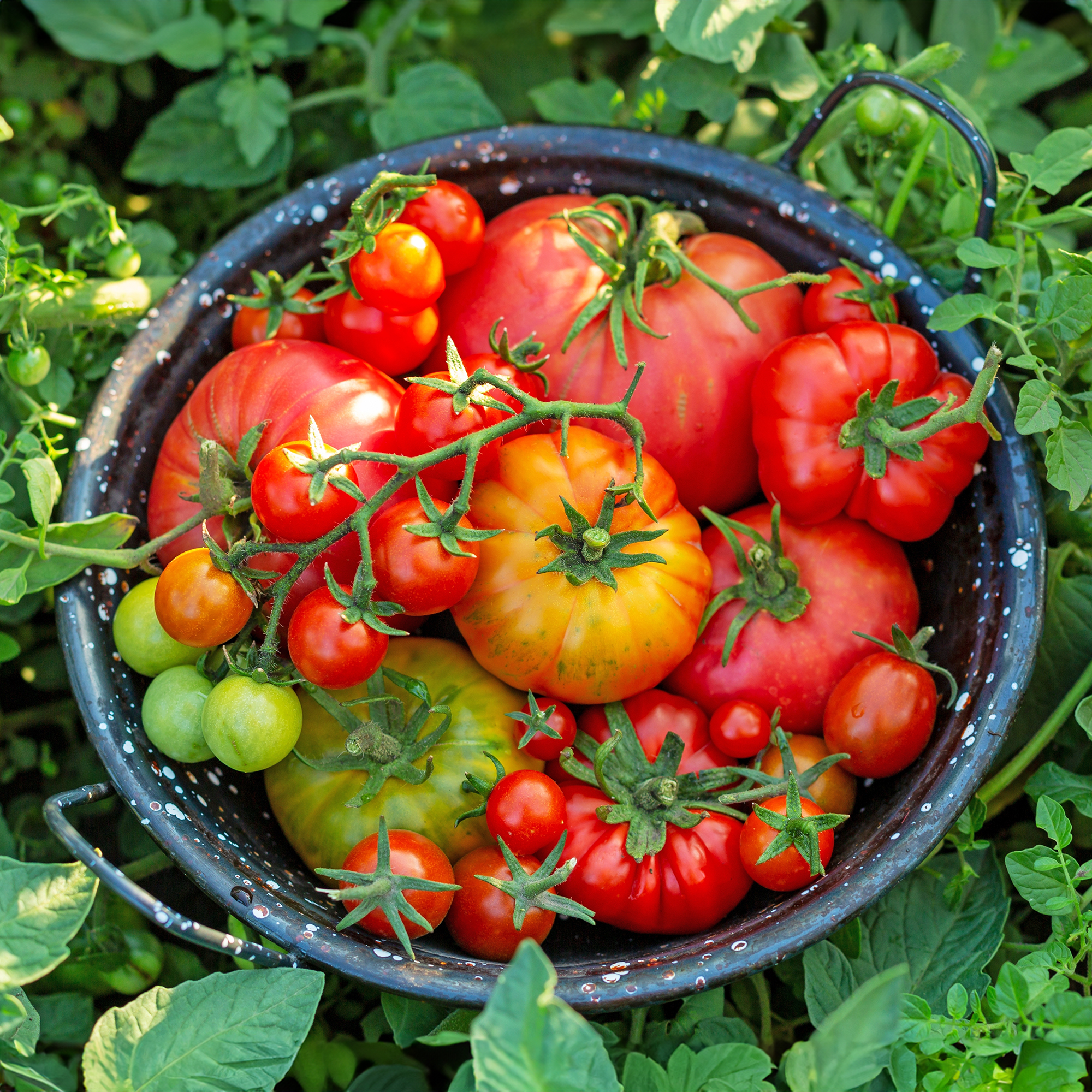Best Determinate Tomatoes: Compact Varieties With Big Yields For Cooking & Canning
Determinate tomatoes are prized for their compact growth and bountiful harvests. Learn their characteristics and choose the best varieties for your garden.
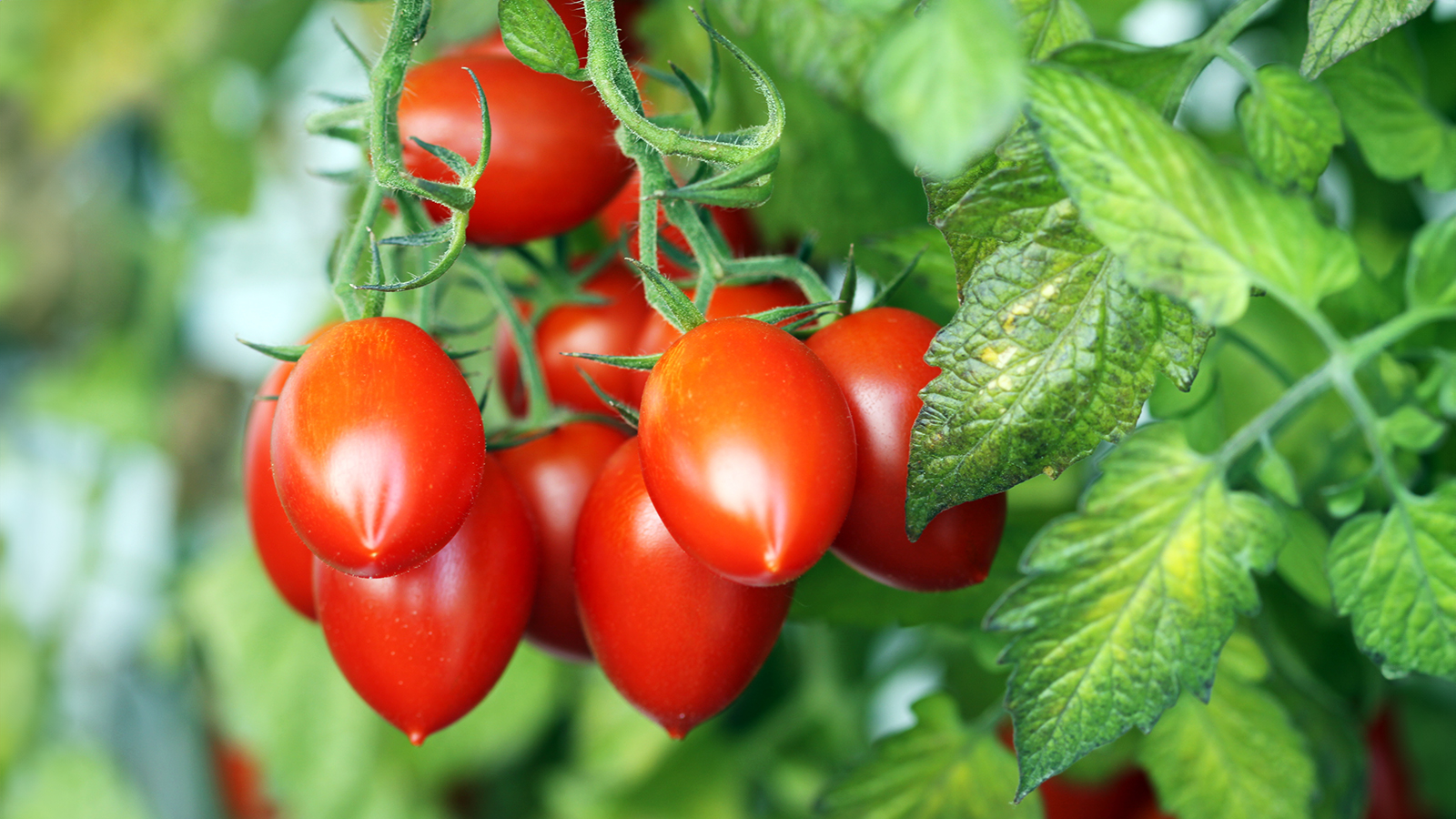

Melanie Griffiths
Determinate tomatoes are the perfect solution for small spaces and container gardens. Their compact, bushy foliage makes plants easy to maintain, and they provide their crop in one big glut. The best determinate tomatoes are perfect for making sauces and canning but can also be enjoyed in salads and sandwiches.
When choosing whether to grow determinate or indeterminate tomatoes, you need to consider your growing space, climate, and what you want to do with your harvest. All types of tomatoes fall into these two broad categories, and there is plenty of variety in fruit size, flavor, and color. Determinate tomatoes simply develop differently than indeterminate tomatoes, which have a vigorous vining growth habit and produce fruit throughout the growing season, allowing growers to harvest little and often until the first frost.
Whether you are just learning how to grow tomatoes and want to explore the different possibilities or are a more seasoned grower seeking new varieties and flavors, determined tomatoes have a lot to offer.
What is a Determinate Tomato?
Determinate tomato plants do all their vertical growth in a short amount of time. Once they have been growing for a month or so, they produce terminal side growth but no further vertical growth or long vines. This gives them a bushier, more compact growth habit, making them ideal for growing tomatoes in containers.
The plants also need much less pruning, training, and staking than indeterminate varieties. They can often be grown with little support except for the lower stems, where fruit might brush the ground. However, many growers do still use a tomato cage or stakes, as the branches are heavy when laden with fruit and may break in bad weather.
Determinate tomatoes develop fruit within a short period – two to three weeks – producing a large harvest perfect for canning, drying, saucing, and other preservation methods. As the plants produce all their fruit within a month or two of flowering, they are ideal for short-season gardeners like those in the north.
Because determinates thrive in containers, they can be more easily moved than indeterminate vines when a cold snap threatens.
Sign up for the Gardening Know How newsletter today and receive a free copy of our e-book "How to Grow Delicious Tomatoes".
As a side note, there are also semi-determinate tomatoes. These do not get as large or vines as indeterminate, but they are taller than determinate varieties.
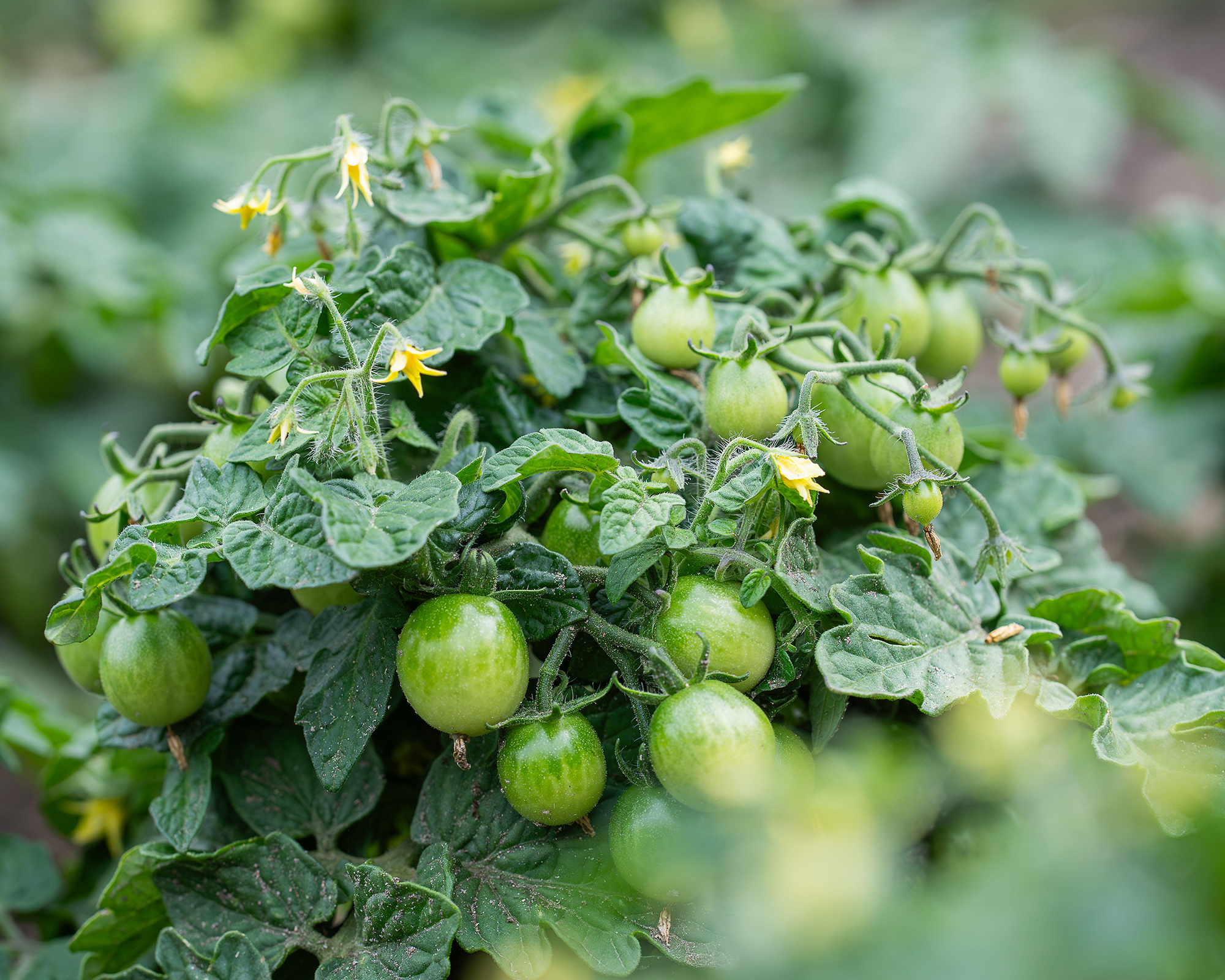
Best Determinate Tomato Varieties
There is a wide variety of determinate tomatoes to choose from, including heirloom tomatoes, plum tomatoes, cherry tomatoes, and beefsteaks.
When selecting the best determinate tomatoes to grow in your garden, consider your climate, plant size at maturity, resistance to common tomato diseases, and your primary goal for the fruit. For instance, do you prefer to have fresh fruit for sandwiches and salads? Or do you want to cook a batch of sauce or make sun-dried tomatoes?
Whatever your priorities, choose from our recommended varieties to ensure success:
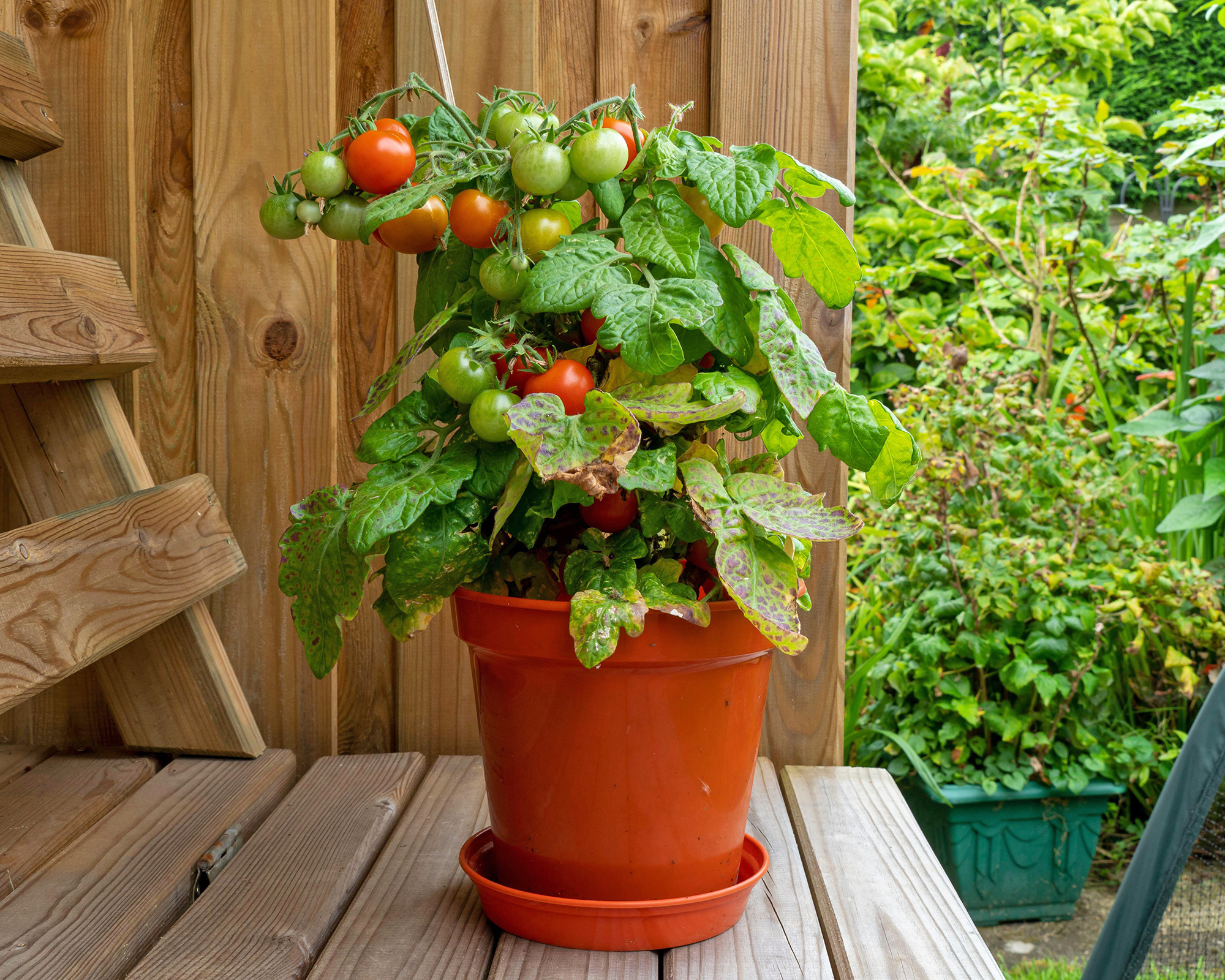
Best for Fresh Eating & Slicing
- Black Sea Man: A large, early slicing heirloom tomato with chocolate shoulders and dark red skin.
- Pride of Flanders: An organic heirloom cherry tomato with purple-red skin.
- Ruby Monster: Bright colored, juicy, and very flavorful slicer.
- Bush Beefsteak: A classic beefsteak slicing variety.
Best for Sauces, Pastes & Canning
- Alaskan Fancy: A very early plum tomato ideal for sauces.
- Milano Plum: A perfect-tasting cooking tomato for sauces.
- Roma: A hybrid plum favored for sauces.
- Oregon Star: A paste tomato for cooler locations.
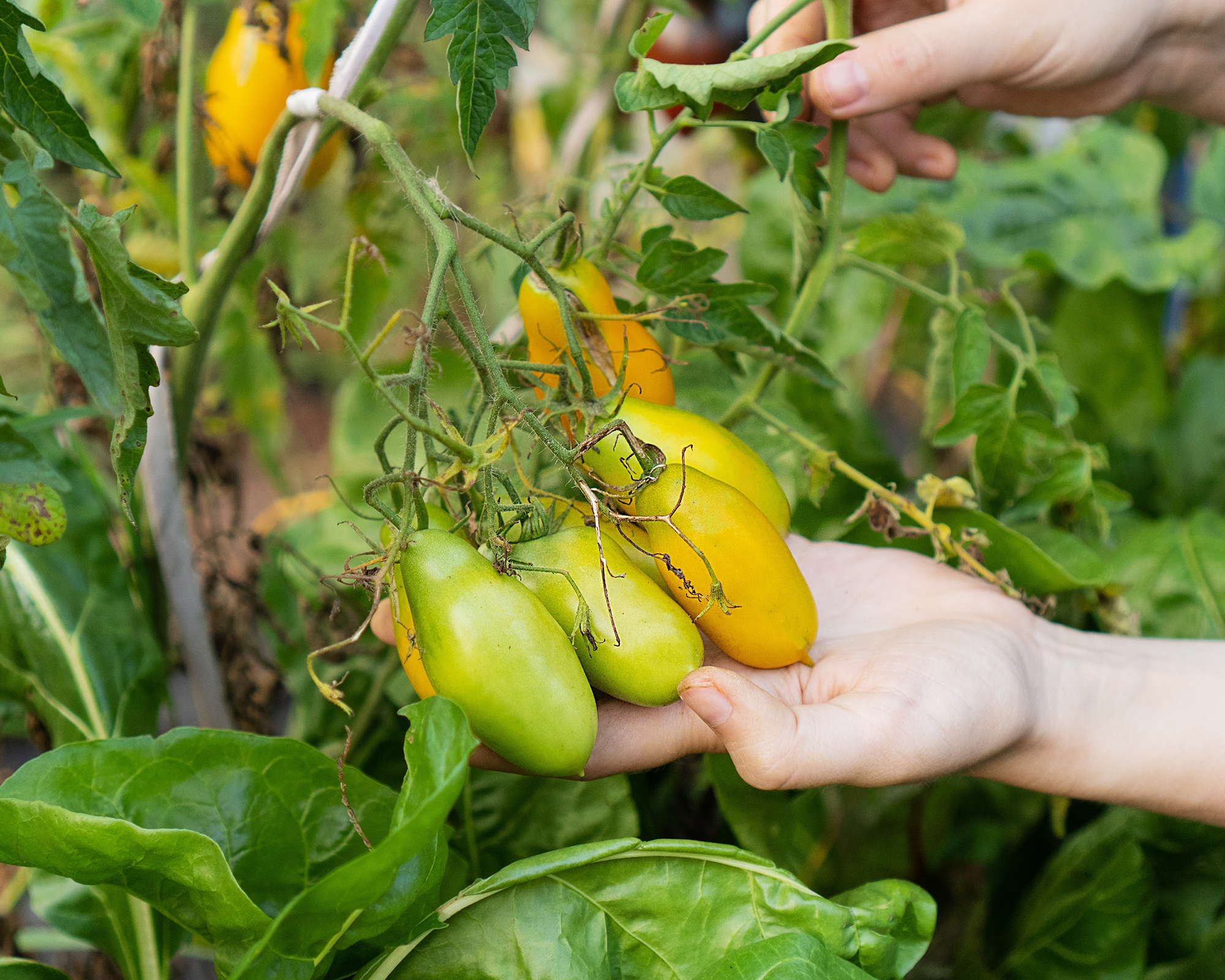
Best for Small Spaces & Container Gardening
- Banana Legs: 4-inch (10cm) long, deep yellow fruits.
- Taxi: Small, lemon-yellow, perfectly round, sweet fruits.
- Anahu: Large cherry for hot and humid regions.
- Burbank Slicing: A very compact plant with large fruits.
Best Disease-Resistant Determinate Varieties
- Marglobe VF: Resistant to several diseases and produces thick, stocky plants.
- Neptune: Orange-red fruits and great heat tolerance.
- Mountain Merit: Compact plants with medium-sized fruit and great disease resistance.
- Iron Lady: Highly resistant to several diseases, with a fine texture and well-balanced flavor.
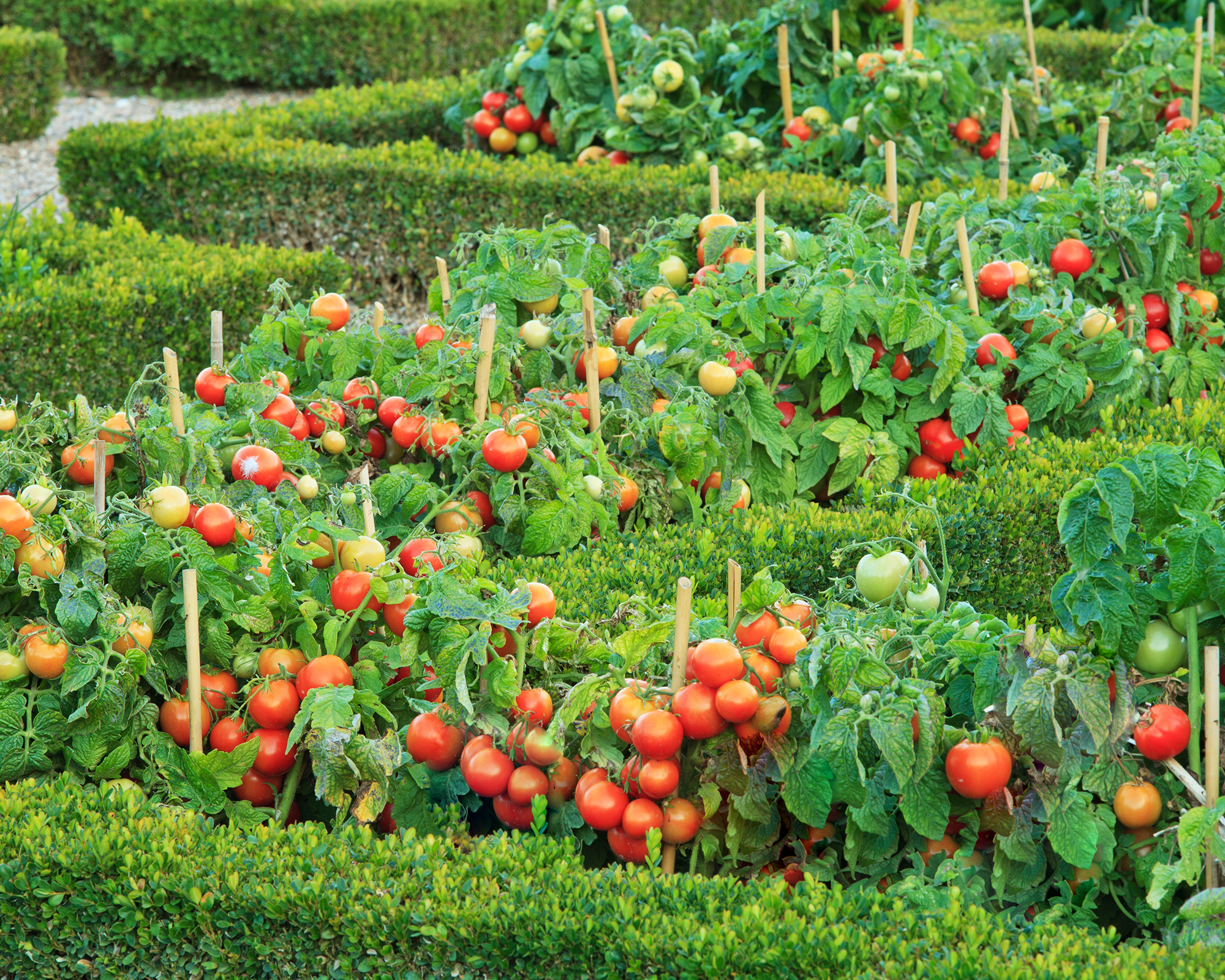
Caring for Determinate Tomatoes
Determinate tomatoes like a full-sun location with at least eight hours of sunshine each day. The soil should be well-draining and of average fertility.
Start fertilizing when the plants are 5 inches (13cm) tall. The best fertilizer for tomatoes is a balanced liquid food delivered to the roots every four weeks. Once flowering starts, begin to feed with a product higher in phosphorus. There are both water-soluble and granular tomato foods.
How often to water tomato plants depends on the climate and whether they are container-grown. On average, determinate tomatoes should be watered deeply twice per week and much more frequently in harsh heat and if the plant is in a container. Feel the soil daily – it should be cool and damp, but not dry or soggy.
The stems will need support once the fruit arrives. At planting, install a tomato cage or other support such as stakes.
There is no need for pruning determinate tomato plants except to remove broken or diseased material. If you are growing in a container, it will need a capacity of at least 5 gallons.
More Tomato Growing Inspiration
- Try the best tomatoes for containers: our 10 tastiest picks produce a bounty in compact areas.
- Browse seed-starting essentials in the Gardening Know How Shop to help give your tomato plants the best possible start.
- Learn how to increase tomato yields with these expert tricks to ensure a bumper harvest.
- Want to try growing purple tomatoes? These cherry, beefsteak, and heirloom varieties are as colorful as they are delicious.
- Sign up for the Gardening Know How Newsletter to stay updated with growing advice, garden inspiration, and exclusive offers.
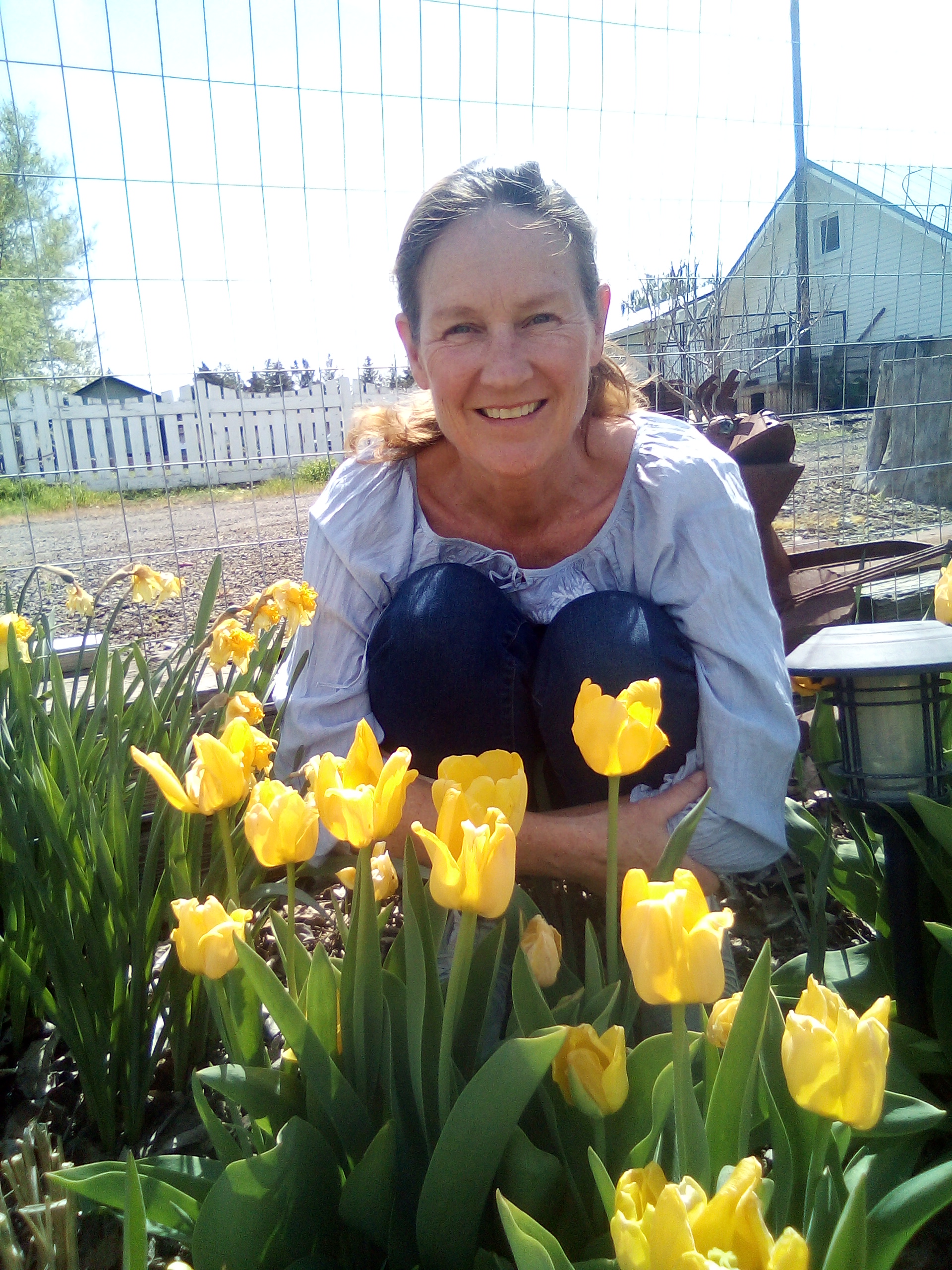
Bonnie Grant is a professional landscaper with a Certification in Urban Gardening. She has been gardening and writing for 15 years. A former professional chef, she has a passion for edible landscaping.
- Melanie GriffithsSenior Editor
